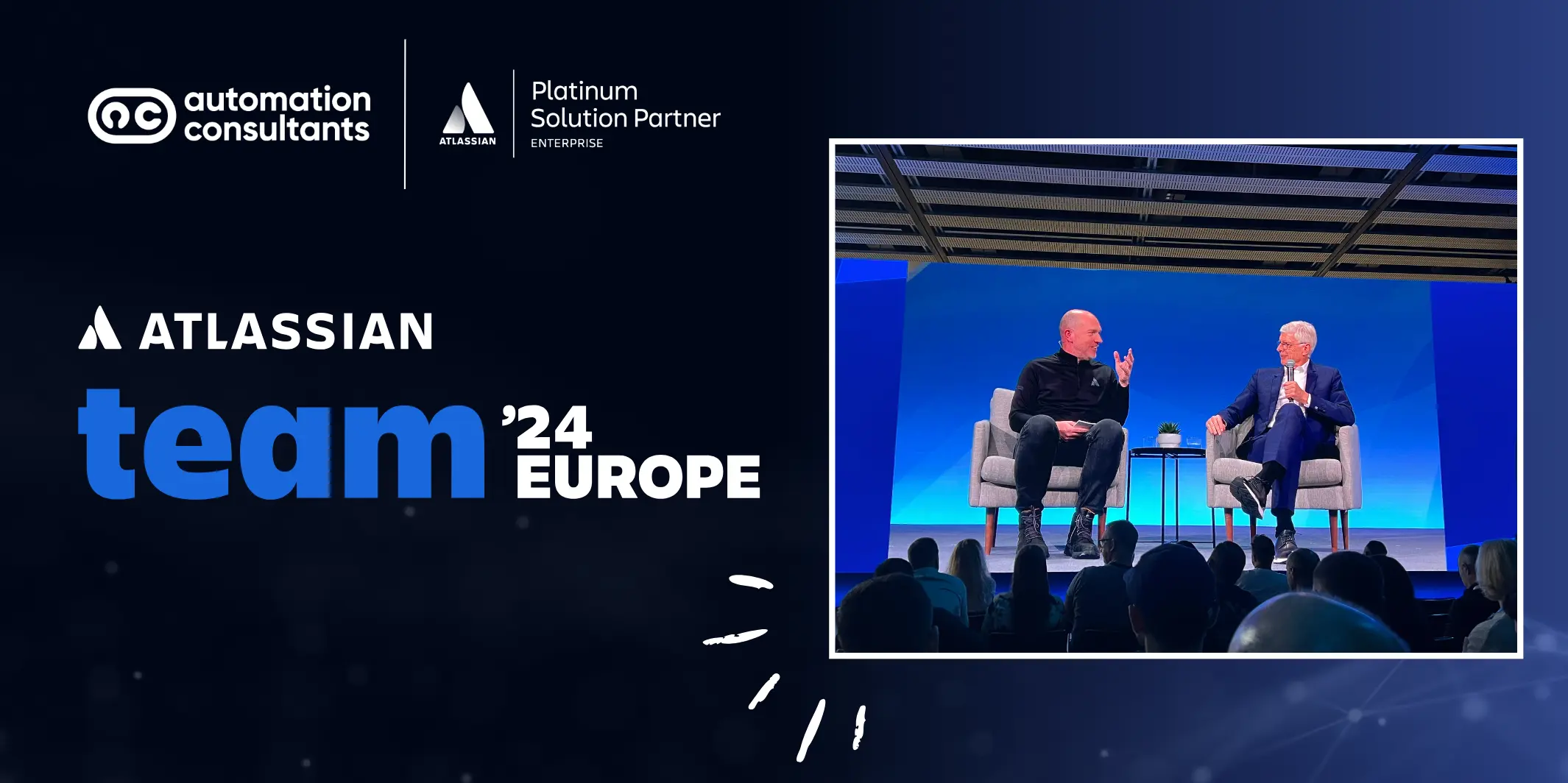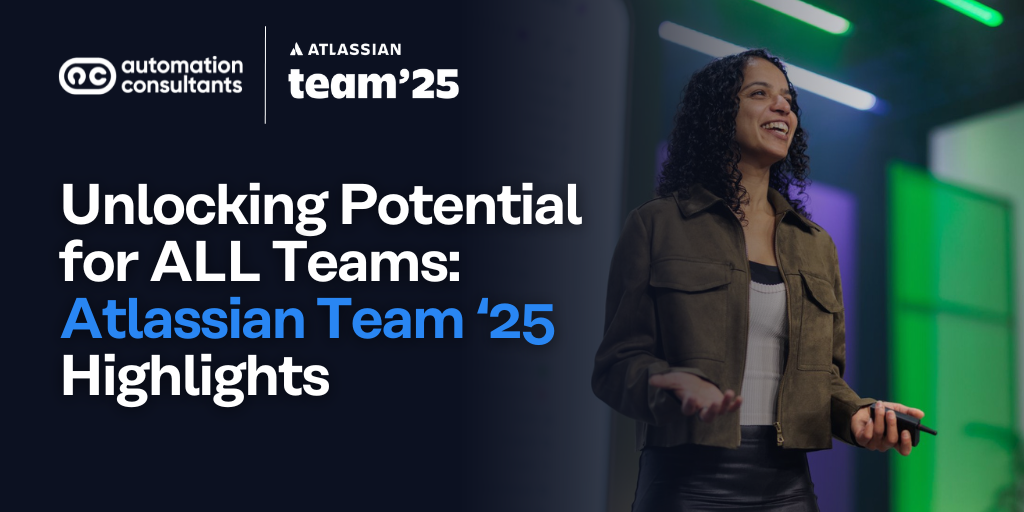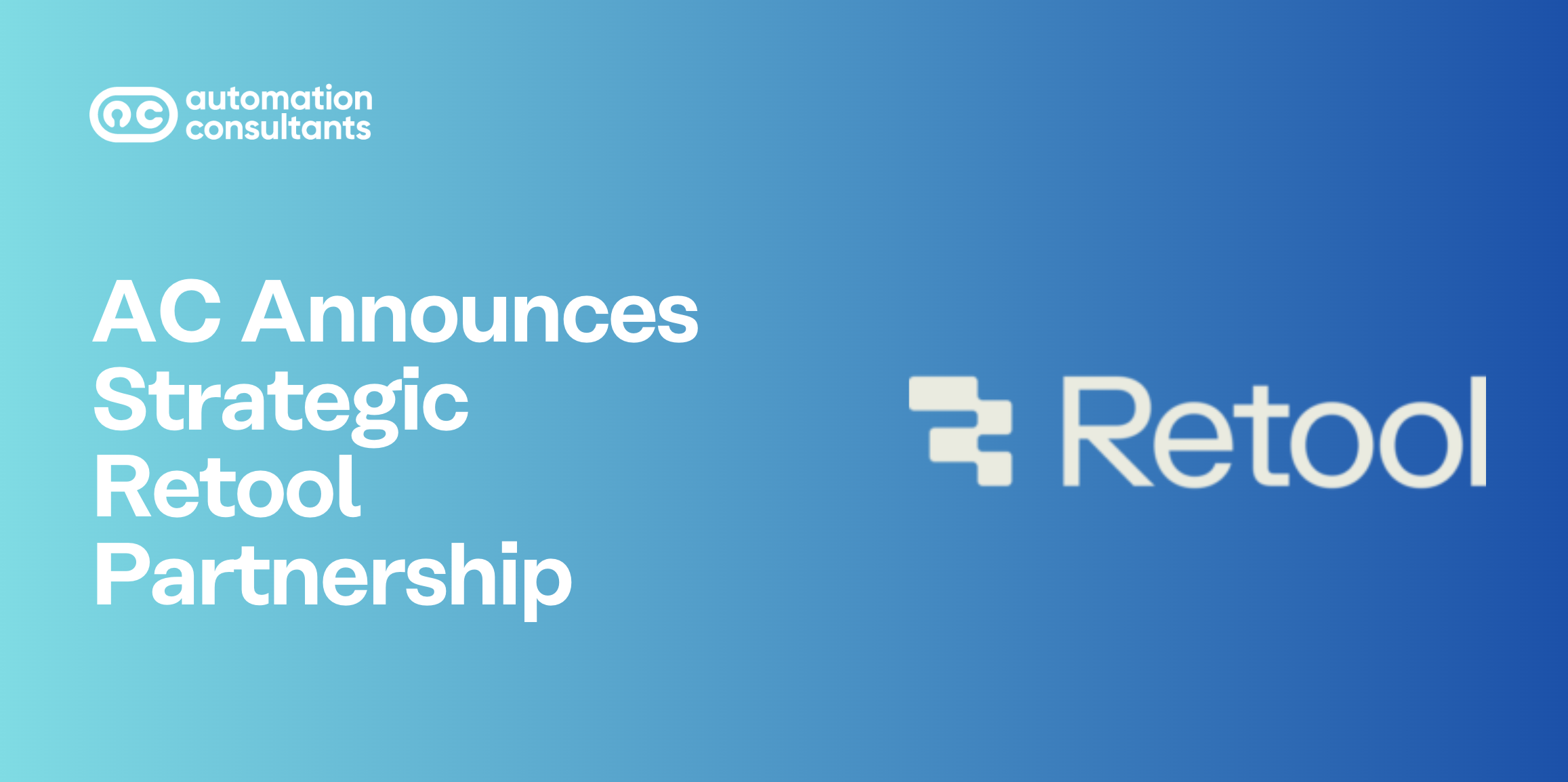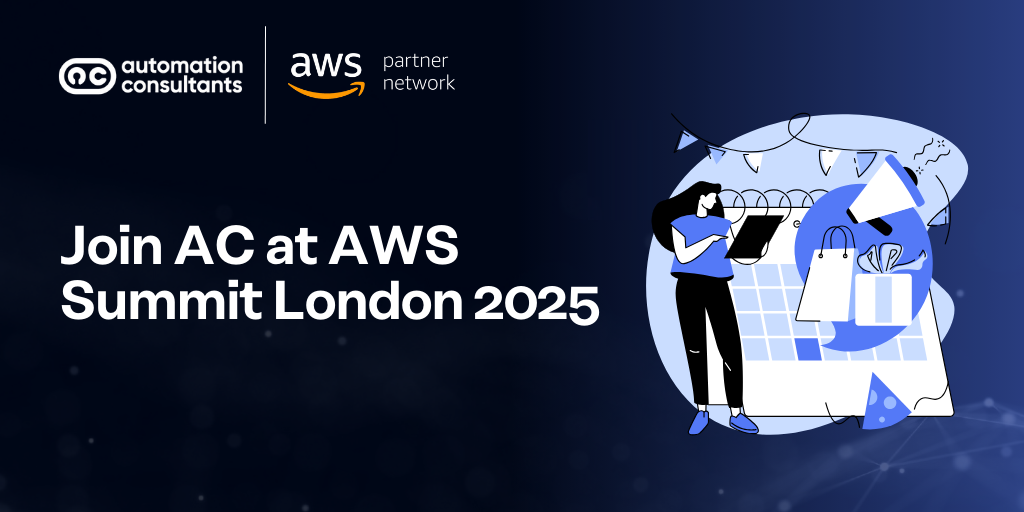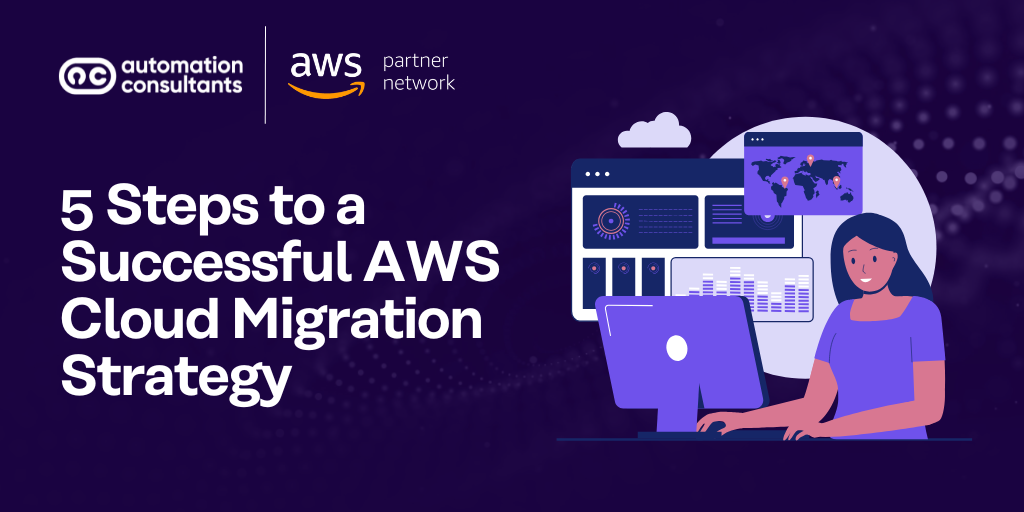We’re back home from Barcelona after a fantastic few days with the Atlassian community.
Yes, Atlassian Team ‘24 Europe wrapped up the other week, and we’re eager to share the key takeaways with you.
Across the event, there were two core themes which stood out – and which really go hand in hand with one another.
The growing impact of AI (Artificial Intelligence)
The changing nature of teamwork
Within these themes were new product launches, exciting enhancements and food for thought from real-world Atlassian success stories. First and foremost, let’s focus on the role of AI.
The role of Atlassian Intelligence within the System of Work
It was clear to us, right from Mike Cannon-Brookes’ keynote, that AI is no longer considered an ‘extra’. Instead, it’s woven through the entirety of the Atlassian System of Work.
It’s hard to believe that Atlassian Intelligence, Atlassian’s AI offering, was only introduced to the world at last year’s Team ’23.
In fact, Cannon-Brookes referenced this in his keynote, saying: ‘It’s truly incredible what we’ve been able to ship over the last 18 months’.
Having witnessed the evolution of Atlassian Intelligence throughout the entire Cloud product suite, we’d have to agree. From the generative AI editor in Confluence to the virtual agents in Jira Service Management, AI is swiftly becoming embedded in teams’ daily tools and processes.
One of the biggest takeaways for me from Team '24 Europe was Atlassian’s eagerness for everyone to truly start benefitting from their AI offering. They have put together a pretty big toolbox, and will be keen to see how their partners and customers use it.
Technical Lead Consultant at AC
We could dedicate an entire blog post to the AI capabilities across the Atlassian techstack. Now, however, seems like an ideal time to focus on its newest product innovation – which is powered by Atlassian Intelligence and your organisation’s unique Atlassian teamwork graph. Welcome to Rovo.
Rovo is now available
The big announcement of the week was that Rovo has entered general availability.
Having introduced the concept of Rovo back at Team ‘24 in Las Vegas, there’s been strong appetite among Atlassian customers and partners, like ourselves, to discover more about this new Atlassian Intelligence-powered product.
Originally billed as a tool to ‘revolutionise enterprise search’, Rovo has evolved into a more comprehensive offering, focused on three key elements:
Finding knowledge
Learning from that knowledge
Taking action
Rovo: Finding information
The primary use case that Rovo was first designed for is still highly relevant. (In his keynote at Team ’24 Europe, Cannon-Brookes referred to it as a ‘massive pain point’.)
It’s this: Most teams still hold information and do their work across various SaaS platforms and apps, leading to significant information silos and disconnects.
With 50+ connectors to leading applications (and with custom connectors available too), Rovo can search across multiple channels and tools to return relevant search results, saving teams the time they would have spent searching for data themselves (sometimes fruitlessly).
Connectors for Atlassian Data Center products will also be available next year – something which drew a small cheer from the audience when it was announced.
Rovo: Learning
Atlassian has introduced Rovo chat, which can help answer team member queries.
Drawing on each organisation’s unique teamwork graph (which you may remember we discussed when Atlassian Intelligence was first announced) and those multiple connected platforms and tools, Rovo can provide additional context and information. Rovo chat operates both within Atlassian products and, through a browser extension, within tools like Google Docs. Atlassian describes this as a ‘seamless’ learning experience – and with reduced context-switching, we’d tend to agree.
Importantly, Rovo only shares information appropriate for each user’s access permissions.
Team '24 Europe really was all about Rovo, first and foremost. From my perspective, the greatest value from Rovo will come from picking the right agents for the right job. Companies will benefit most from deploying a carefully designed or selected agent for a well-understood problem.
Technical Consultant at AC
Rovo: Acting
To act on the knowledge that Rovo can deliver, you can use Rovo Agents – essentially virtual teammates, each designed to meet very specific goals and use cases.
Not to be confused with chatbots, Rovo Agents access specified knowledge and take relevant actions as defined by you. Rovo comes with 20 out-of-the-box agents ready for you to use, but you’ll also be able to create your own to fulfil a specific task. (It’s worth noting here that you can create a Rovo agent with no code. To us, this speaks to a further effort by Atlassian to democratise technology and enable all teams, not solely those with technical prowess, to benefit from innovations like Rovo.)
Atlassian itself has created over 500 Rovo agents internally.
We will be taking a more detailed look at Rovo in a future blog post, so do keep your eyes out for that, as there is a lot to unpick.
The evolution of teamwork
Whilst there was, unsurprisingly, a significant focus on AI across Team ‘24, there were also multiple conversations around Atlassian Intelligence’s role as a ‘teammate’ – not as a human replacement. AI will be working alongside us, not instead of us, seemed to be a key message.
So, what does Atlassian envision the future of teamwork to look like?
Three core things stood out for us here.
1. AI’s role in teams of the future
We will move on from AI, but it was unfailingly present in almost every session at Team ‘24 – and for good reason. It will, undoubtedly, shape the way teams work in the not-too distant future. During his keynote, Mike Cannon-Brookes shared his vision for the future:
[All teams] will be partnering with AI to succeed… The winning teams of the future will consist of a combination of human teammates and AI teammates… Atlassian will help you welcome AI into your teams.
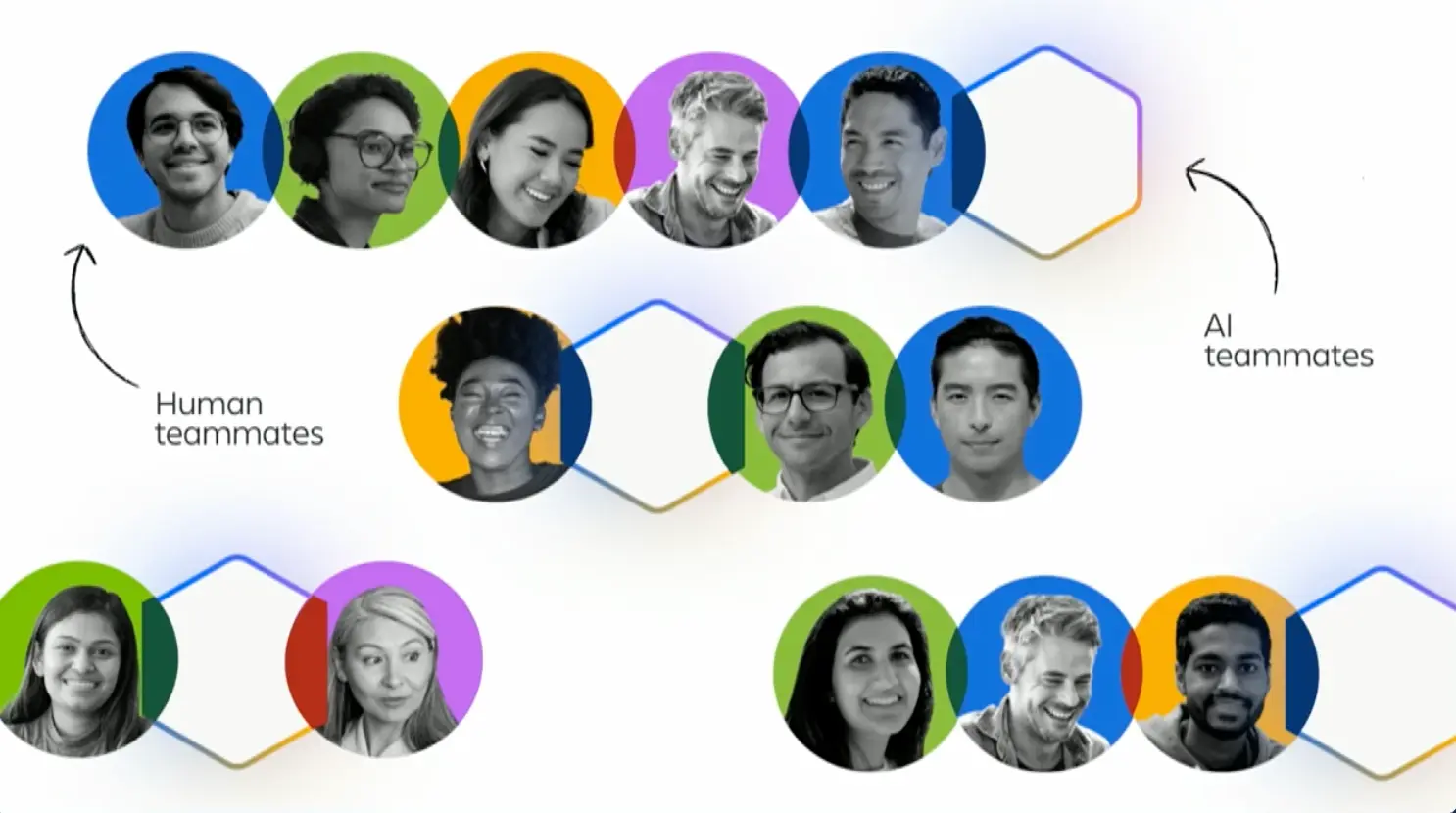
Atlassian illustration of what ‘winning teams’ could look like: A combination of AI and human teammates. Credit Atlassian, 2024.
2. The Atlassian System of Work
Atlassian has recently adopted a new approach to its product suite, developing a clear ‘System of Work’ to connect teams more effectively.
As we touched on in our section about Rovo, teams often use a disparate mix of platforms to work across and store information.
The Atlassian System of Work addresses these challenges head on.
The tools within this system, including new additions Rovo and Loom (which embraces asynchronous working with video content, and which we will talk more about in a later piece) alongside familiar foundation products like Jira and Jira Service Management, enable teams to share knowledge and collaborate towards shared goals.
Also notable was Atlassian’s continued focus on Cloud at Team ‘24 Europe, with Anu Bharadwaj, President at Atlassian, sharing her pride that all the new enhancements and innovations delivered were, ‘…powered by the Atlassian Cloud Platform with a rich Teamwork Graph and Enterprise-grade infrastructure’, in comments she made after the event.
Are you ready to explore Atlassian Cloud? Whether you’re currently an Atlassian Data Center user, or you’re completely new to the System of Work, it may be time for you to make the move to the Cloud. As an Atlassian Cloud Specialized Partner, and Platinum Solutions Partner, we’re ideally placed to guide you to Cloud success. Discover more today and begin your Cloud migration journey with AC.
3. Team-focused product enhancements
Some of the most notable product updates at Team ‘24 Europe related to Jira (we’ll outline these in more depth in the next section), and seemed designed to widen its appeal to any teams within an organisation.
In fact, Atlassian described Jira as ‘a shared place for every team to align on goals and priorities, track and collaborate on work, and get the insights they need to build something incredible, together.’
This continued emphasis on making powerful software available to teams in any space, not just those with technical backgrounds, really supports Atlassian’s vision of a future where:
All teams are connected, regardless of time-zone or location
Every team has access to powerful software, no matter their technical prowess (or lack of)
Information is centralised, even when stored across dozens of tools and applications
Knowledge is democratised and accessible via AI agents, so all teammates can benefit
Now, this is our interpretation of Atlassian’s vision – but with tool consolidations like Jira Work Management and Jira Software, the continued focus on bringing teams together with a deliberate System of Work, and using AI to enhance knowledge-sharing and building, we think it’s a reasonable read.
The big question is, of course, how does this impact you, as Atlassian users?
Well, beyond the new AI capabilities at your fingertips, which look set to enhance your team’s efficiency, let’s take a moment to explore the new product enhancements you can expect in Jira.
Continued changes for Jira
You’ll almost certainly remember that ‘a new era for Jira’ was announced at Team ‘24 in Las Vegas earlier this year. By incorporating notable elements of Jira Work Management into Jira Software, the latter was renamed as solely ‘Jira’ and relaunched as a project management tool for all teams, not only those in the software development space.
Now, Jira is once again the subject of change. We’ll run through some of them here for you:
Interface and visual customisation
Atlassian announced that it is rolling out a new navigation for Jira, both in the form of a top-line nav and sidebar. This navigation will be customised to your Jira usage, meaning your most relevant work appears first, which is handy. The top-line nav will also now include AI-powered search in the top-line nav, which can collate work from across Confluence and other sources. Again, this reduced context-switching should prove valuable in terms of time efficiencies.
You’ll now also be able to customise your Jira with visual branding – again to enhance the experience for different teams. With background images, colours and card covers, the images we’ve seen so far have a Trello-like feel to them.
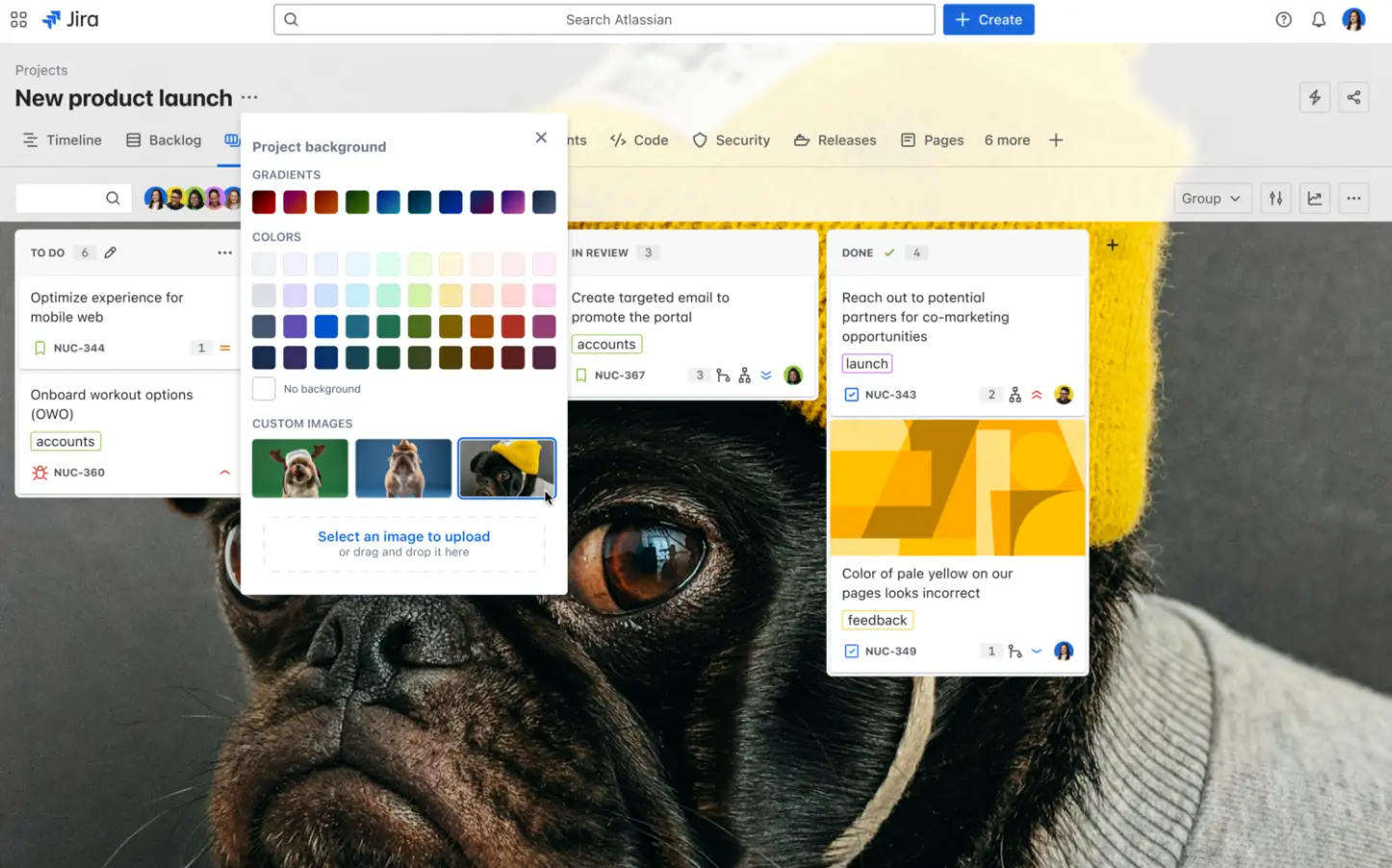
Image of Jira visual customisation options. Credit Atlassian, 2024.
Changes to terminology
Work will no longer be known as ‘issues’ by default any more. Instead, as part of this continued effort to make Jira more flexible for multiple business areas, Atlassian has enabled teams to choose their own way of referring to work, such as a ‘task’ or ‘launch’.
Writer’s note: As someone who had to navigate between Jira ‘issues’ and just general ‘issues’ when I first started writing about Atlassian and Jira, this is fairly welcome news! It will be interesting to see whether this flexibility in terminology will be embraced by all users, and how much its impact will be felt.
Is your team getting the most out of Jira? Would you benefit from Jira training or best practice guidance? Or perhaps simply a review of your configuration and processes? Here at AC, we have over two decades’ experience supporting teams to unlock success and achieve their aims – so let us unleash your potential through your Atlassian tooling.
Custom project templates
Atlassian shared that this was one of ‘the most requested’ features for Jira, so it’s excellent news that this has been delivered. Essentially, teams can create their own bespoke project templates, which can then be reused, with pre-configured workflows, automations and more.
Again, this should prove valuable to wider business teams using Jira – particularly those with more complex or unique processes, or for whom the existing range of templates (originally from Jira Work Management) don’t quite meet their needs.
Atlassian shared that custom project templates will be coming soon.
These are just three of the Jira product updates that Atlassian shared at Team ‘24 Europe, and are some of the ones we feel relate most directly to Jira’s continued evolution as a tool for all teams.
To read about further Jira enhancements, do take a look at Atlassian’s write-up here.
What else was new at Team '24 Europe?
Well, quite a lot. Atlassian Focus has arrived in Jira Align, providing even greater strategy and planning capabilities for enterprises.
Meanwhile, there were further enhancements to Atlassian Intelligence virtual agents in Jira Service Management, which we look forward to exploring in more depth, updates to Jira Product Discovery and more!
To round things off today, Atlassian Guard is now in general availability, enabling customers to benefit from advanced Cloud security features.
How can you benefit from Atlassian product updates and enhancements?
There’s a lot to take in from Team ’24 Europe. Some of the updates we shared today are available, whilst others are yet to be released into general availability.
What’s crucial at this stage is that you and your teams are in a position to really maximise your value from these new enhancements and products.
Whether you’d like a health-check of your Jira instance to prepare for wider usage across more teams, or think your JSM processes may need optimising, why not benefit from a FREE 30-minute consultation? You can talk us through your challenges and objectives, and we’ll deliver some initial recommendations for you to consider. Utterly informal and free of charge, book one today.
Contact us today and book your free consultation with Automation Consultants
As an Atlassian Cloud and ITSM Specialized Partner, and Platinum Solutions Partner, here at Automation Consultants we live and breathe the Atlassian System of Work. We’re passionate about enabling teams to maximise their value from Atlassian tools, and helping you to unlock success across your organisation – whether that’s embedding AI firmly into your processes, or guiding you through a Cloud migration.

